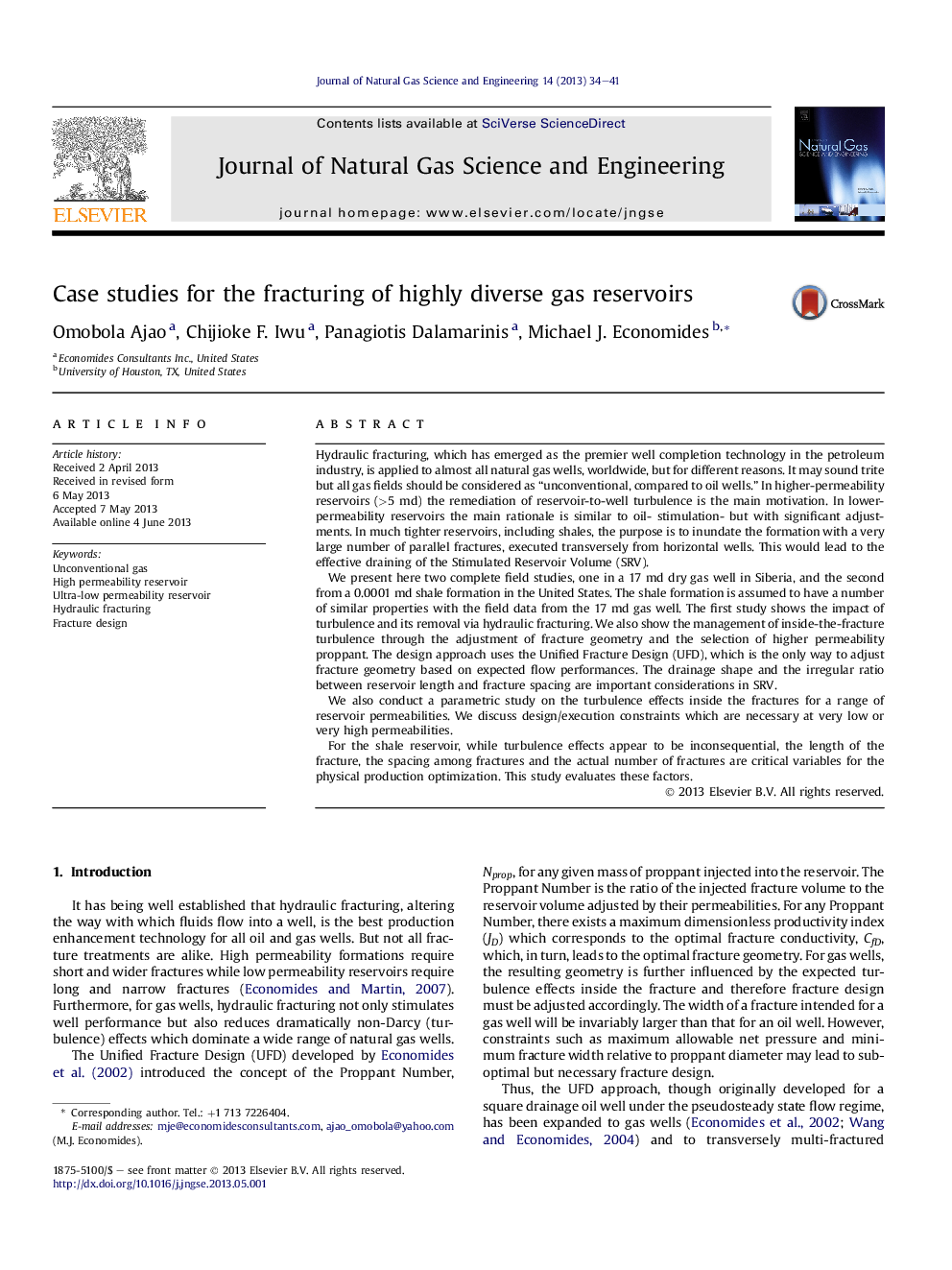| کد مقاله | کد نشریه | سال انتشار | مقاله انگلیسی | نسخه تمام متن |
|---|---|---|---|---|
| 1758043 | 1523026 | 2013 | 8 صفحه PDF | دانلود رایگان |

• Importance of hydraulic fracturing to high permeability and ultra-low permeability reservoirs.
• Fracture designs on the diverse gas reservoirs.
• Effect of different design parameters and variables on fracture designs.
Hydraulic fracturing, which has emerged as the premier well completion technology in the petroleum industry, is applied to almost all natural gas wells, worldwide, but for different reasons. It may sound trite but all gas fields should be considered as “unconventional, compared to oil wells.” In higher-permeability reservoirs (>5 md) the remediation of reservoir-to-well turbulence is the main motivation. In lower-permeability reservoirs the main rationale is similar to oil- stimulation- but with significant adjustments. In much tighter reservoirs, including shales, the purpose is to inundate the formation with a very large number of parallel fractures, executed transversely from horizontal wells. This would lead to the effective draining of the Stimulated Reservoir Volume (SRV).We present here two complete field studies, one in a 17 md dry gas well in Siberia, and the second from a 0.0001 md shale formation in the United States. The shale formation is assumed to have a number of similar properties with the field data from the 17 md gas well. The first study shows the impact of turbulence and its removal via hydraulic fracturing. We also show the management of inside-the-fracture turbulence through the adjustment of fracture geometry and the selection of higher permeability proppant. The design approach uses the Unified Fracture Design (UFD), which is the only way to adjust fracture geometry based on expected flow performances. The drainage shape and the irregular ratio between reservoir length and fracture spacing are important considerations in SRV.We also conduct a parametric study on the turbulence effects inside the fractures for a range of reservoir permeabilities. We discuss design/execution constraints which are necessary at very low or very high permeabilities.For the shale reservoir, while turbulence effects appear to be inconsequential, the length of the fracture, the spacing among fractures and the actual number of fractures are critical variables for the physical production optimization. This study evaluates these factors.
Journal: Journal of Natural Gas Science and Engineering - Volume 14, September 2013, Pages 34–41